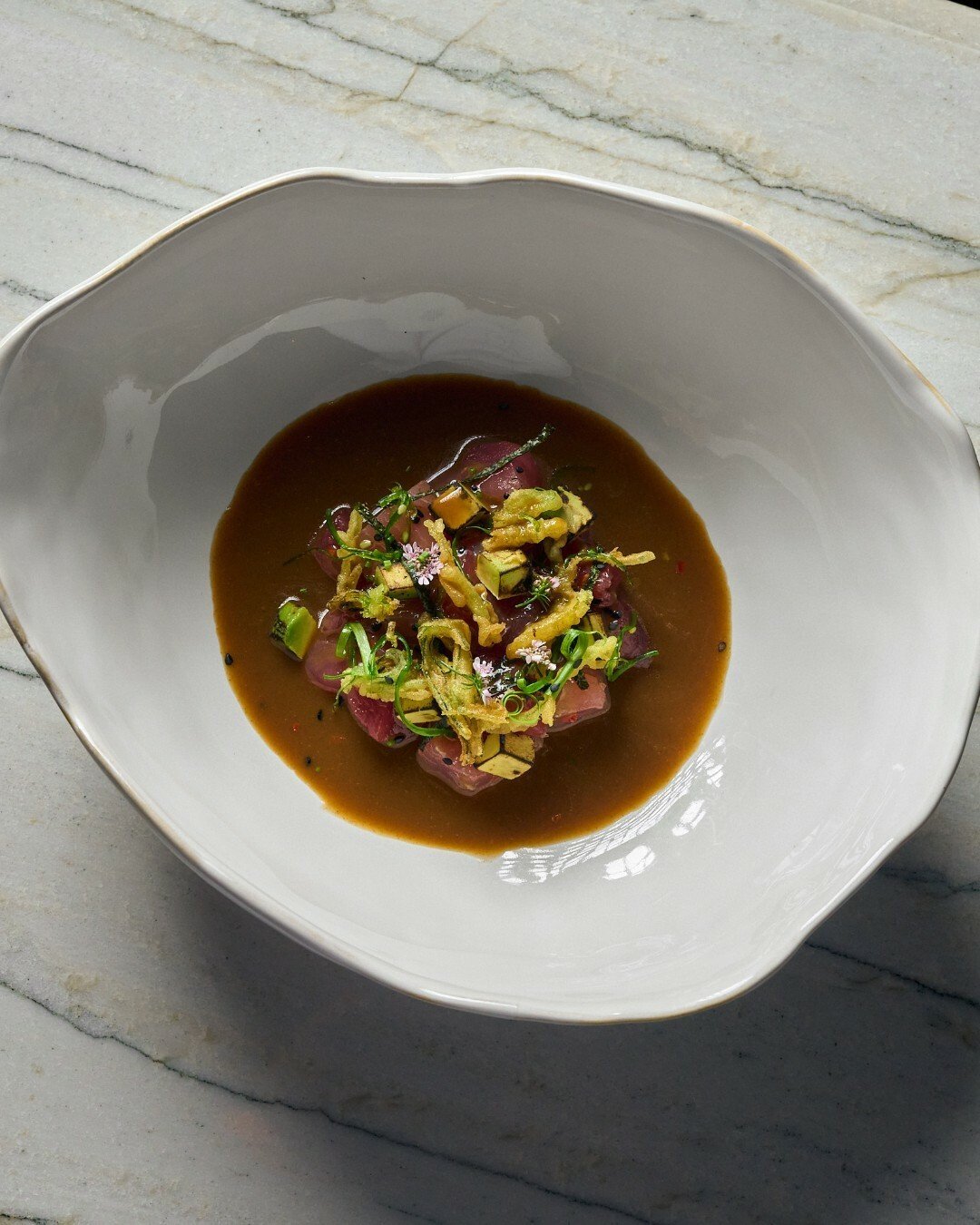
MIAMI
Why Jaime Pesaque’s NUNA Might Be the Future of Peruvian Dining in Miami
Article by Eric Barton | | Photos by Ruben Cabrera | May 27, 2025
>>>LEER EN ESPAÑOL>>>
AUTHOR BIO: Eric Barton is editor of The Adventurist and has reviewed restaurants for two decades. He splits his time between Miami and Asheville, N.C. Email him here.
If you’ve followed the global rise of Nikkei cuisine—this shimmering fusion of Peruvian ingredients and Japanese technique—then you already know the name Jaime Pesaque.
A classically trained chef who cut his teeth at Le Cordon Bleu and polished his artistry across Europe, Pesaque has built a mini-empire of restaurants stretching from Italy to the Netherlands. Now, with NUNA, his temporary-but-maybe-not-so-temporary pop-up at the Four Seasons in Brickell, he’s brought the next evolution of Nikkei to Miami—and it’s not what you think.
Instead of sushi tropes and pan-Asian shortcuts, Pesaque’s menu reads like a love letter to craft: corvina ceviche with leche de tigre, a saltado that pairs beef and lobster, even a tuna roll slicked with acevichado sauce and a whisper of crunch. It’s his most personal work yet—“a sensory journey,” as he calls it—and very much a product of this city.
In our conversation below, Pesaque talks about the family cook who first inspired him, how he sources Wagyu and aji amarillo in equal measure, and why Panther Coffee still tops his Miami to-do list.
Can you tell me a bit about who got you interested in cooking?
During my childhood in Peru, everything in my life revolved around food. I’d watch cooking shows religiously and help our family cook, Epifania, while she prepared dinner. That interest quickly became a passion, and by high school, I was taking weekly classes with a French chef. At 17, I landed my first kitchen job at a seafood restaurant in Lima and discovered the world of ceviches and tiraditos. From there, I studied at Le Cordon Bleu in Paris and then the Italian Culinary Institute for Foreigners.
You opened your first restaurant on your own in 2008. What did you learn from that experience that guides you in opening places today?
I learned the importance of teamwork, innovation, and staying true to my roots while adapting to new environments. My mission has always been to leverage my international experiences and expertise in Peruvian cuisine to create memorable dining experiences.
NUNA blends Japanese technique with Peruvian flavor. What makes your interpretation of Nikkei different, and what did you want to bring to Miami that diners haven’t seen before?
At NUNA, we’re going beyond the expected. It’s a more contemporary, thoughtful approach—balancing Japanese tradition with Peruvian influences, heritage with innovation. Every dish is intentional, from the brightness of the flavors to the ingredient-forward compositions. Miami’s energy makes it the perfect place to debut this concept.
You’ve described NUNA as a “more contemporary, thoughtful approach” to Nikkei cuisine. What does that mean on the plate?
It means honoring two cultural legacies with artistry. Guests can expect dishes like Ceviche Limeño with corvina, leche de tigre, sweet potato, and cilantro; the NUNA Roll with tuna, acevichado sauce, avocado, and crispy shrimp; and Saltado al Wok, a bold stir-fry of beef and lobster infused with Nikkei flavors.
You’ve opened Nikkei restaurants in the Netherlands and Italy. What has the response been like?
The response has been very positive. Our approach to Peruvian-Japanese cuisine has resonated with diners across different cultures.
Miami is no stranger to Latin and Asian flavors. What kind of palate are you cooking for here—and how did the city’s cultural diversity shape your menu?
I’ve known and loved Miami for many years—I was part of the SuViche brand when it launched. It’s a cosmopolitan, ever-evolving city, which makes it the perfect canvas. With NUNA and my other concepts, my goal is to take risks, push boundaries, and keep Peruvian cuisine at the center of the global conversation.
How did you approach sourcing seafood, beef, and those key Peruvian and Japanese components for a restaurant in the U.S.?
We prioritize native, high-quality ingredients—from fresh seafood for ceviches and sushi to Wagyu beef and a mix of Peruvian chili peppers, Asian vegetables, and Japanese staples like ponzu, yuzu, and miso. We also try to incorporate local products when possible.
How long do you imagine this pop-up staying?
Right now, NUNA is slated to operate at the Four Seasons Hotel Miami for one year.
You’ve spent some time now in Miami. Favorite coffee house? Peruvian restaurant? Something else you’ve discovered?
Panther Coffee is my go-to—I never come to Miami without stopping by. For Peruvian food, I’d say SuViche. And I’m always on the lookout for new fine-dining spots across the city.








